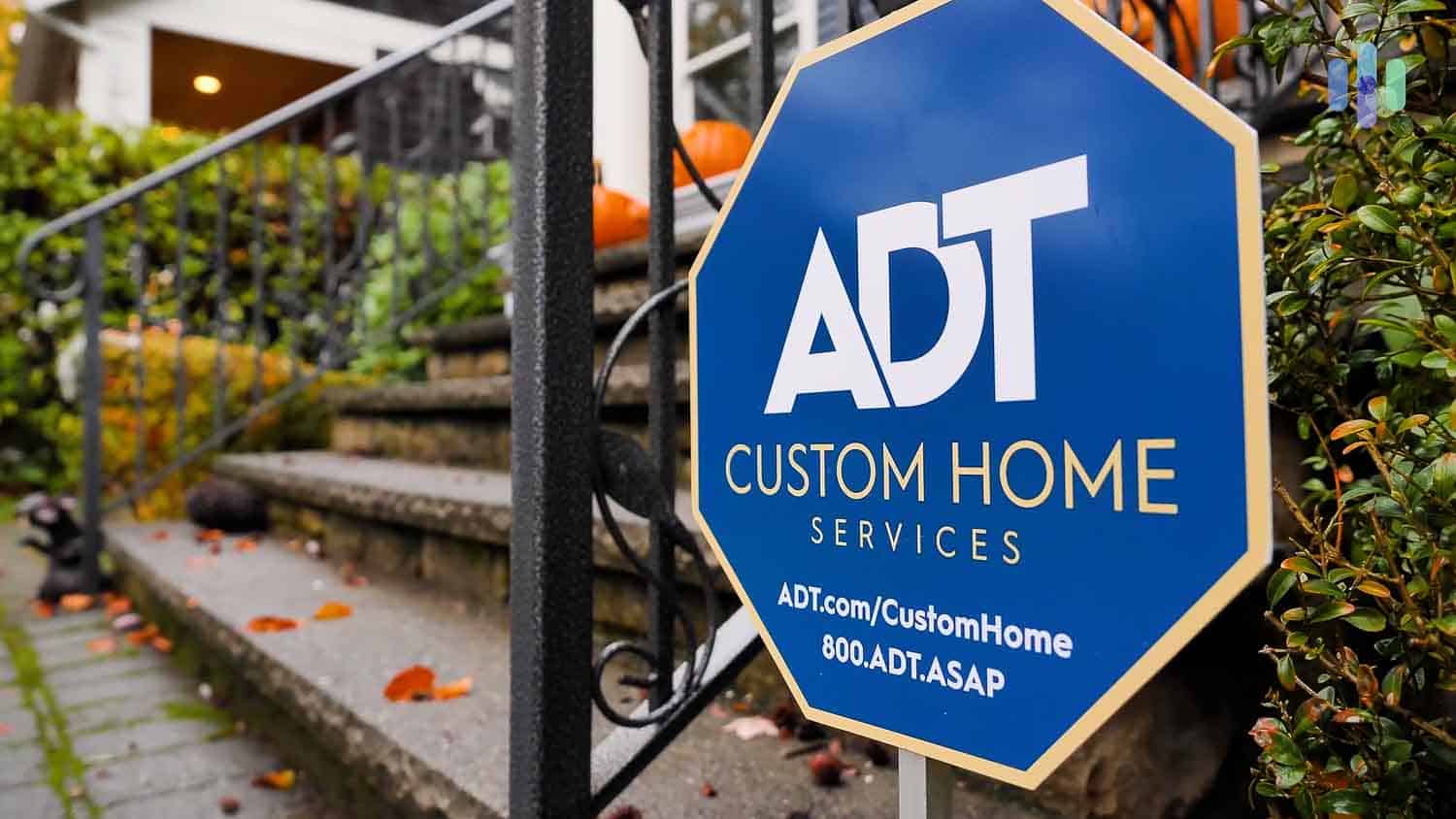ADT vs. Bay Alarm: Comparison of the Bay Area’s Most Trusted Security Providers
An in-depth look at the features, equipment, and monitoring of ADT and Bay Alarm.


 Paul Frew, Home and Digital Security Expert
&
Paul Frew, Home and Digital Security Expert
&
 Gene Petrino, Home Security Expert
Last Updated on Oct 27, 2025
Gene Petrino, Home Security Expert
Last Updated on Oct 27, 2025

- Professional installation available for all systems
- 24/7 monitoring with 12 redundant centers across the U.S.
- Over 150 years of security expertise and innovation

- Home security consultations for new customers
- Starts at $25 monthly for 24/7 monitoring
- Serves states in the West Coast

ADT and Bay Alarm remain two of the most trusted home security providers in the Bay Area. Both bring decades of expertise to the table, but which alarm company offers the best protection for your home and family? We’ve thoroughly tested both systems and compared their features, equipment, customer service, monitoring capabilities, and pricing to give you our expert verdict.
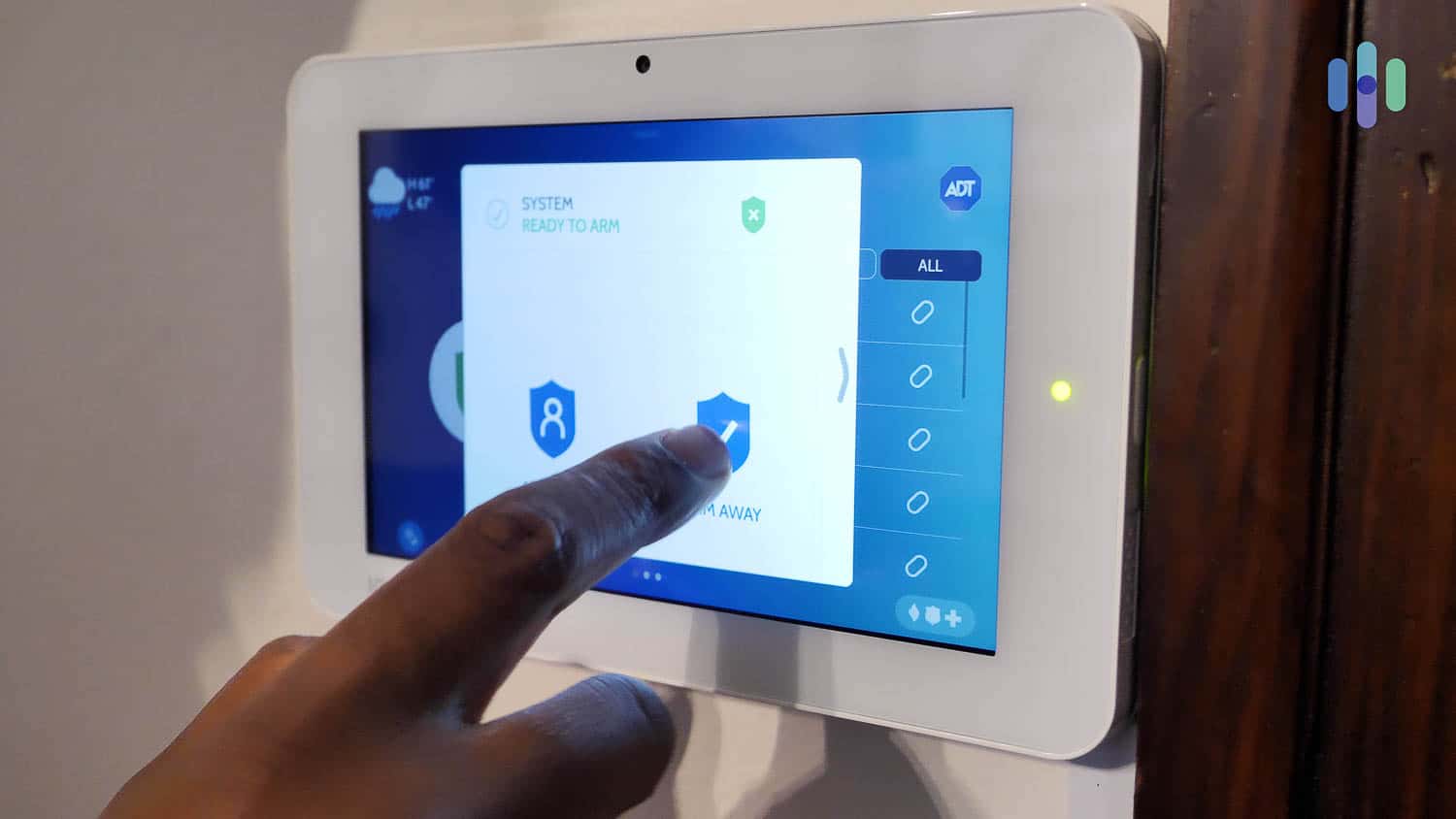
Overview of ADT and Bay Alarm
Trust is an important factor when choosing a security system. You want a company to which you can entrust your and your family’s safety and security, and both ADT and Bay Alarm fit the bill.
ADT has been around for over a century; it’s actually the first alarm company to offer monitored home security. It’s one of the largest alarm companies in the United States, and it offers its services in all 50 states.
Bay Alarm, on the other hand, has been providing services to the Bay Area for over 75 years. While it recently expanded its service area to include Phoenix, areas surrounding North Sound, Washington, and parts of Southern California, its primary operations remain centered in Northern California.
Longevity adds a few points to their resumes, but it’s what they offer now that matters most. Both ADT and Bay Alarm offer customized home security systems with 24/7 professional monitoring, intrusion detection, home automation, and video monitoring.
Let’s take a closer look at those features to see which of the two old guards does it better. Before that, though, here’s an overview of how ADT and Bay Alarm stack up side by side.
| Home security specs | ADT | Bay Alarm |
|---|---|---|
| Coverage | Nationwide | San Francisco Bay Area; Southern California; Phoenix; and North Sound, Washington |
| Years in service | Over 150 | Over 75 |
| Installation type | Professional and DIY options | Professional |
| Monitoring type | Professional | Professional |
| Wired or wireless | Wireless (wired systems are also available) | Wireless |
| Intrusion detection | Yes | Yes |
| Environmental hazard monitoring | Yes | Yes |
| Contract length | 3 years (no contract for self-setup options) | 3 years |
| Security system pricing | $269 and up | Custom quote for every customer |
Similarities of ADT and Bay Alarm
It’s not unusual for alarm companies to have lots of similarities, especially those with similar business models like ADT and Bay Alarm.
- Customized systems: With both ADT and Bay Alarm, you can customize your security system to fit your unique security needs. You can select from a wide variety of security sensors, hazard detectors, and home-automation equipment.
- Security cameras: ADT and Bay Alarm use security cameras to maximize your protection. The cameras detect intruders using sensors and record valuable video evidence.
- Monitoring contract: Professional monitoring is essential for both companies, though ADT now offers some flexible no-contract options through their ADT Self Setup packages. Bay Alarm requires a traditional three-year commitment for all systems.
- Professional monitoring: ADT and Bay Alarm offer professional installation services. All systems are installed by trained technicians who will come to your house and lay out the security system to offer optimal security and protection.
- Home automation: A staple feature of home security systems, home automation from ADT and Bay Alarm let you control smart-home devices such as thermostats, lights, and locks using a smartphone app.
Key Differences Between ADT and Bay Alarm
ADT and Bay Alarm differ in several areas, and the differences could heavily influence your decision-making.
- Coverage: ADT services the entire United States with over 200 local offices, so you can take ADT with you wherever you move. That’s not possible with a regional alarm company like Bay Alarm. It is only available in California, Phoenix, and North Sound, Washington.
- System customization: You can customize your security system with both companies, but Bay Alarm takes a more hands-on approach. A representative will review the layout of your home and recommend strategic placement for sensors and cameras. With ADT, you can place your order online or via phone.
- Customer support: ADT’s customer support is available 24/7. You can reach them via phone, live chat, or social media. Bay Alarm’s technical support team is available only on weekdays between 8 a.m. and 5 p.m.
Comparing the Equipment
It has become standard for alarm companies to offer a wide range of equipment options, and ADT and Bay Alarm are prime examples. Both systems are customizable. They allow the addition of security sensors, environmental hazard sensors, security cameras, and home automation equipment.
Security Sensors
Security sensors are responsible for monitoring for break-ins: door sensors, window sensors, motion sensors, garage door sensors, and glass-break sensors, among others. Both ADT and Bay Alarm offer all those types of sensors.
With ADT, you can shop online and customize your security system. You can also contact ADT by phone if you need help picking the sensors for your setup.
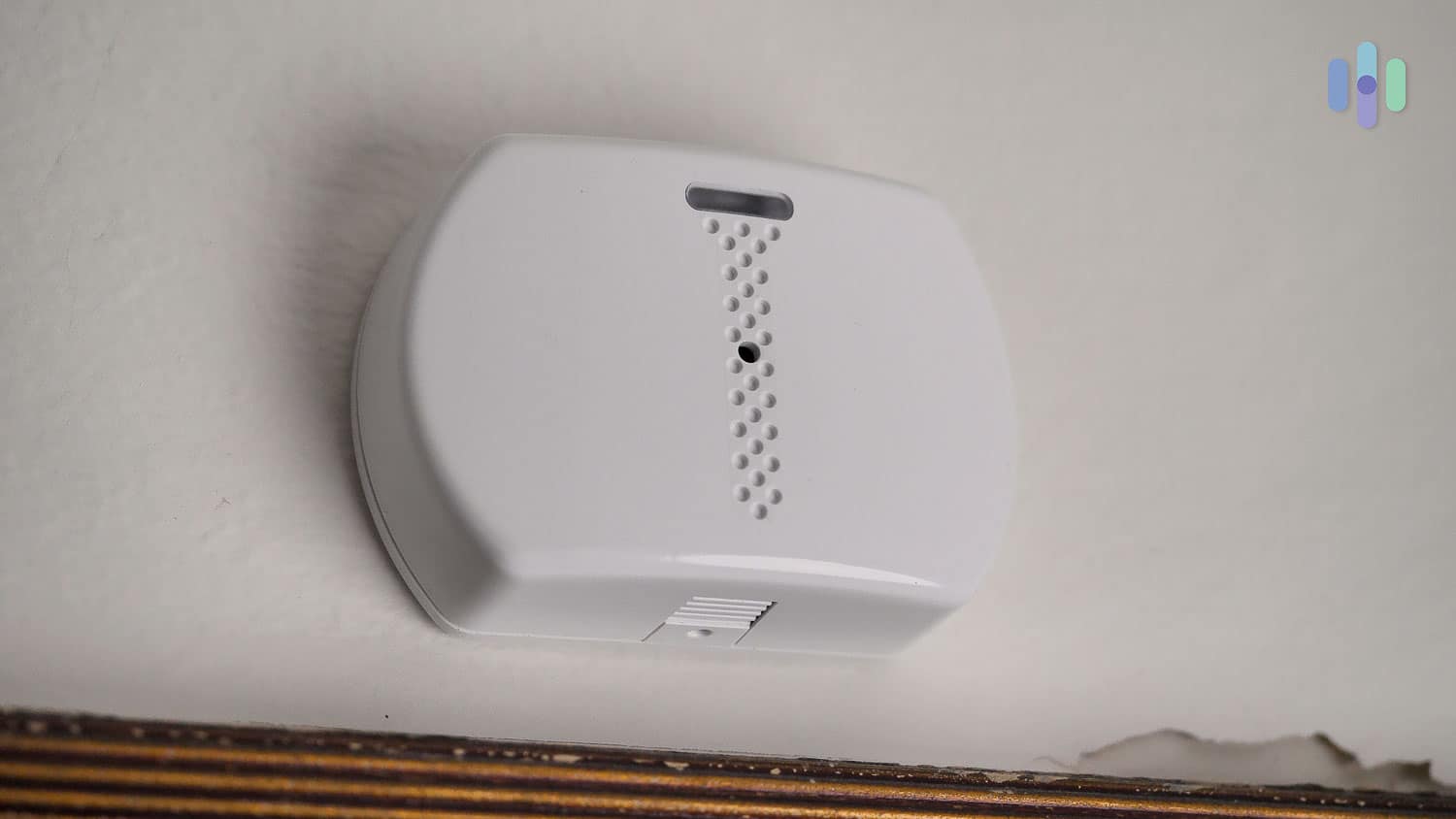
With Bay Alarm, you’ll schedule an appointment for a representative to do a walk-through of your home and recommend a setup. You can take their recommendation as is, or make final changes before installation.
Either way, you’ll get a security system designed to meet your unique home security needs.
Did You Know? ADT’s online store now features interactive tools that help you build a custom security system. It bases the system on your home’s layout and specific needs, making the shopping experience more personalized without sales pressure.
Environmental Hazard Sensors
Aside from keeping intruders out, ADT and Bay Alarm offer security system peripherals that can help you stay safe from home hazards such as fire and gas leaks. These environmental hazard sensors can also help you avoid costly repairs by notifying you as soon as something goes awry.
These sensors are typically:
- Smoke detectors
- Carbon monoxide detectors
- Flood sensors
- Freeze sensors
ADT and Bay Alarm both monitor smoke and carbon monoxide detectors, since fires and gas leaks pose life-threatening dangers. As soon as your sensors go off, ADT and Bay Alarm’s respective monitoring centers will be notified and will contact emergency services. Controls for those sensors are integrated into the burglar alarm system for convenience.
Flood and freeze sensors don’t pose immediate threats that require an emergency response, so they are self-monitored. You will receive a notification on your smartphone, and you can respond accordingly at your own convenience.
While flood and freeze sensors typically don’t require emergency response, monitoring for these sensors can save you thousands in repair costs. Both companies alert you if one of these sensors is tripped. That way, you can act quickly before water damage spreads and worsens.
Home Automation
Even though ADT and Bay Alarm are two of the oldest alarm companies, they upgraded their systems to keep up with the newer brands that offer advanced features. One feature they adopted is home automation.
Home automation lets you remotely control smart devices such as smart thermostats, locks, and bulbs that are integrated into the system. You can also automate them by scheduling them to take actions at certain times, creating scenes to control multiple devices at once, or setting up automated tasks to respond to your actions.
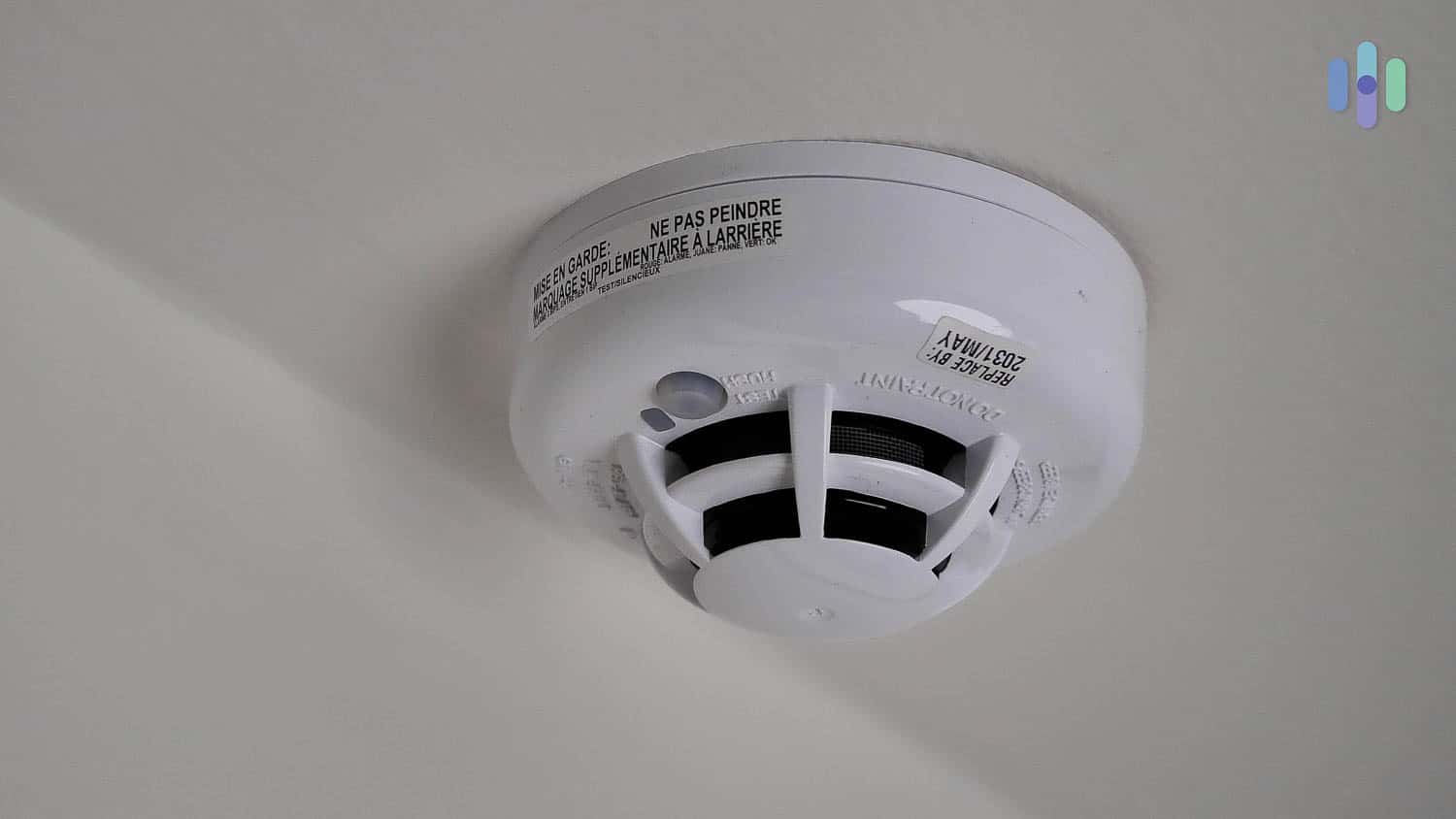
ADT recently expanded its automation capabilities through its ADT+ platform. It now integrates with Google Home, Amazon Alexa, and over 100 smart home device brands. You can create complex automation routines, geofencing triggers, and even integrate with smart energy management systems. Bay Alarm offers basic scheduling and scene controls, but lacks the extensive third-party integrations that ADT provides.
Security Cameras
Security cameras play an important role in home security. ADT and Bay Alarm both know that, which is why they offer a selection of indoor, outdoor, and doorbell cameras.
We’re not going into too much detail about each company’s security camera lineup, but we can tell you that ADT and Bay Alarm each have advantages in this regard.
For ADT, it’s that its systems are compatible with Google Nest cameras. Google Nest cameras are some of the most advanced security cameras around, with features such as person detection and facial recognition. This security camera change marks a big upgrade compared to when we tested ADT a few years ago. Their cameras used to only feature 720p resolution, noticeably less clear than the Google Nest Cam’s 1080p resolution that we enjoyed during our latest tests.
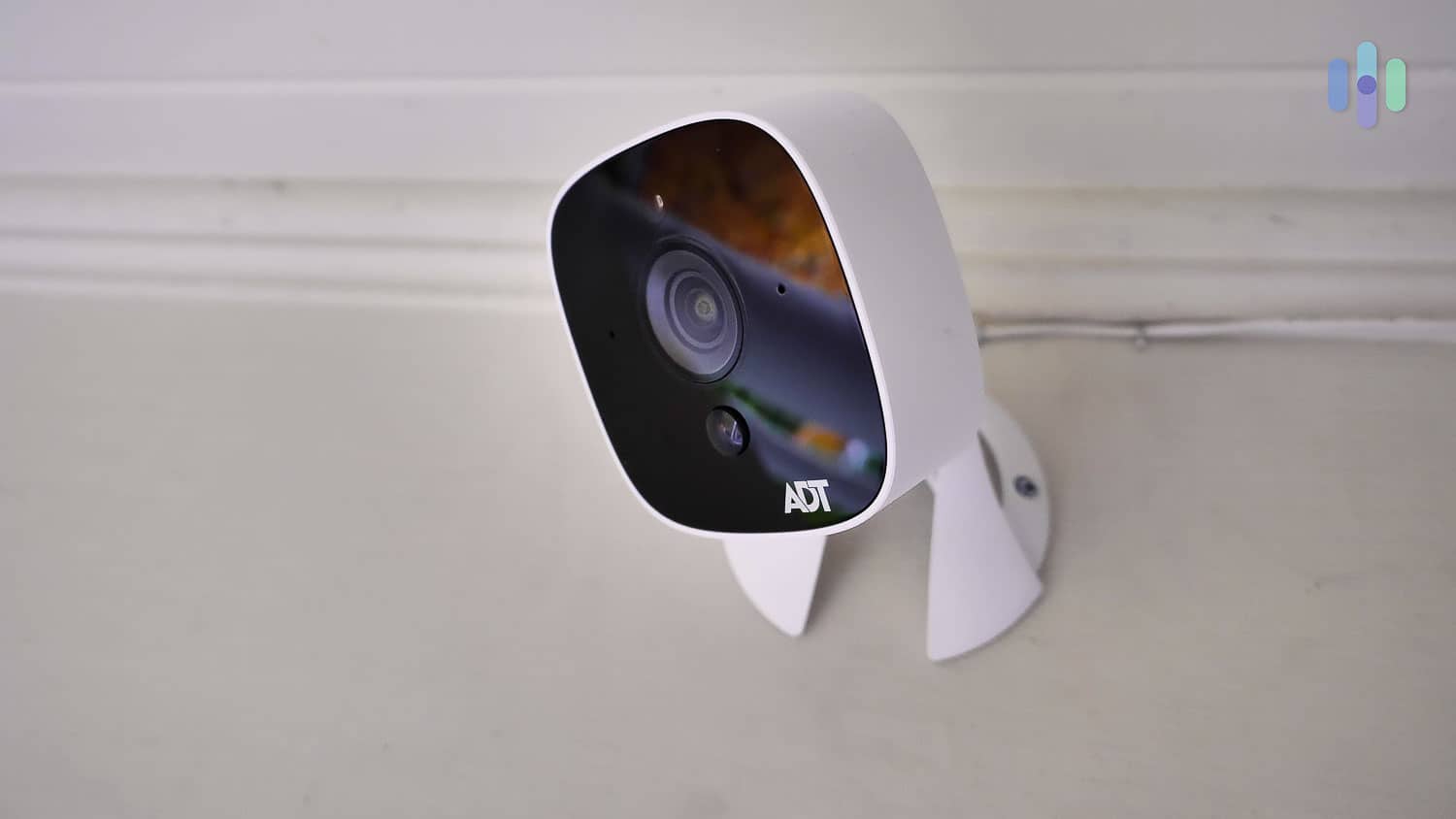
Bay Alarm’s advantage lies in its proprietary video verification system. It enables them to check security camera footage before sending dispatch requests. That allows for faster police response and a lower false alarm rate. This is critical in the Bay Area specifically because some police departments require a verified alarm to dispatch officers. The false alarm rate reduction also helps free up active duty officers, combatting the ongoing police response time crisis.1
FYI: ADT also uses video verification, but so far we’ve seen it only with the company’s business security offerings and not residential security systems. For residential customers, they send a video clip along with their alarm notification, so you can easily verify the incident.
Comparing Monitoring Features
Beyond equipment, you’ll need a monitoring plan to use either ADT or Bay Alarm. The plan will be included when you sign up, but it will require a monthly fee. ADT has recently introduced more flexible options, including month-to-month monitoring for their self-setup systems, while Bay Alarm maintains traditional contract requirements.One crucial advantage for ADT is its network of 12 monitoring facilities strategically located across North America. Each center maintains the strictest industry certifications (UL-listed and FM-approved). With so many facilities, they’re equipped to handle any regional or natural disaster without any interruptions to your monitoring service. If your local center goes down, one of their other facilities seamlessly takes over.
Monitoring Features
The features of both ADT’s and Bay Alarm’s monitoring plans scale with your security system. If you go with a basic system without home automation and security cameras, for example, you’ll pay the lowest monthly fee available. If you go all in and buy at least one product from each type of equipment, you’ll be enrolled in the highest monitoring plan.
The typical features of monitoring plans from ADT and Bay Alarm include:
- Professional monitoring: Operators from the company’s monitoring centers will monitor your system around the clock for possible security and environmental hazards.
- Smartphone control: You’ll be able to control your home security system from your smartphone using each company’s respective smartphone app.
- Home automation: With the right plan, you can also control smart-home devices and create automated schedules, scenes, and rules. ADT offers more advanced controls in this area.
- Video monitoring: This includes event recording, as well as livestreaming camera feeds on your smartphone.
- Video verification: Bay Alarm plans with video monitoring also include video verification.
- Cellular backup: By default, ADT and Bay Alarm systems use your home Wi-Fi to send alerts. If that’s unavailable, however, they can use cellular signals similar to what our phones use to call or text.
FYI: ADT is one of the best security systems with cellular monitoring, largely thanks to the cellular chip built into the ADT touchscreen panel that allows cellular communication when your Wi-Fi is down.
One crucial advantage for ADT is its network of 12 monitoring facilities strategically located across North America. Each center maintains the strictest industry certifications (UL-listed and FM-approved). With so many facilities, they’re equipped to handle any regional or natural disaster without any interruptions to your monitoring service. If your local center goes down, one of their other facilities seamlessly takes over.
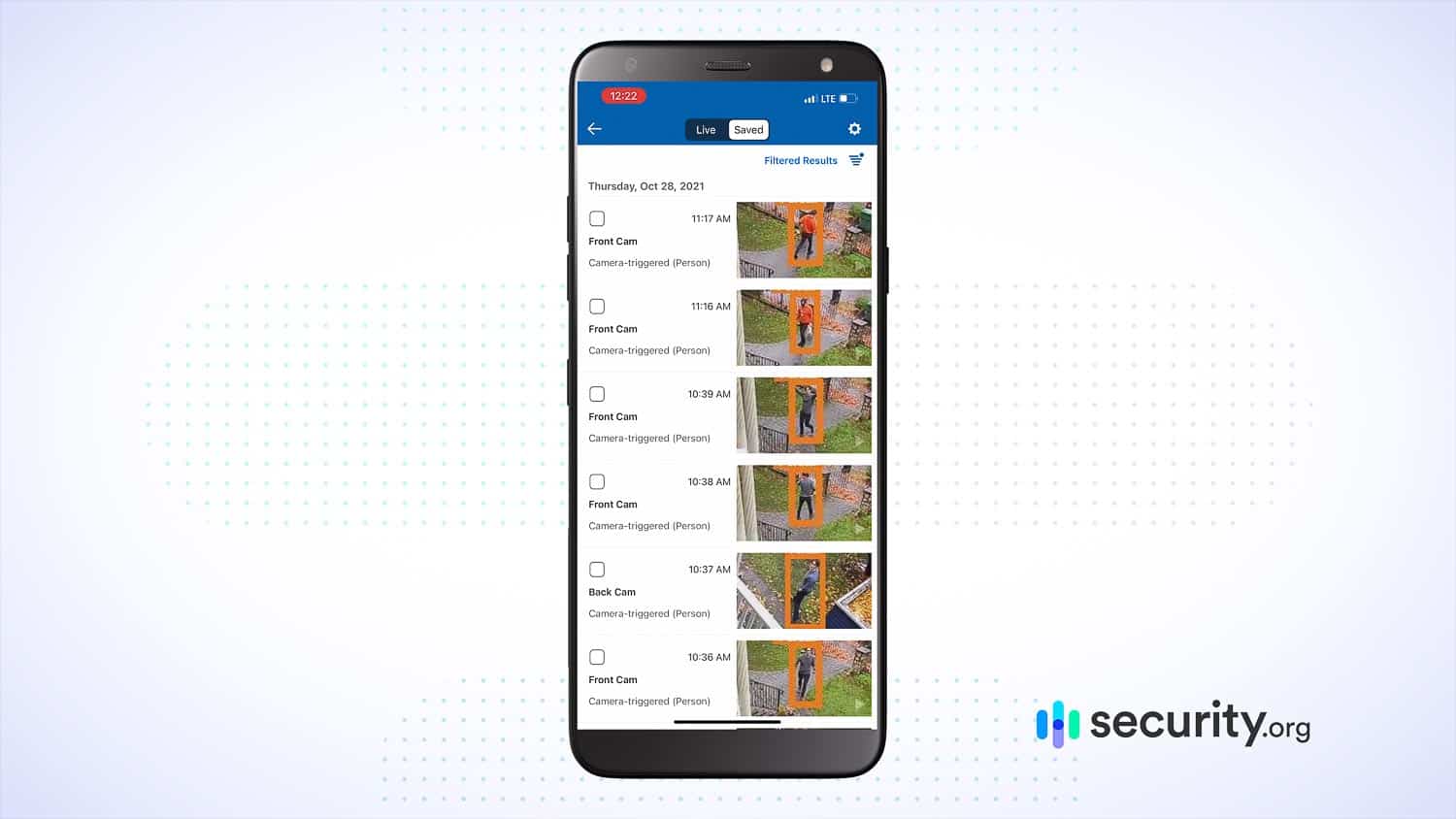
Bay Alarm has only one monitoring center. It’s staffed 365 days a year and it has backup measures such as generators and extra servers, which are formidable in their own right, but it doesn’t come close to the assurance ADT provides.
Monitoring Cost
ADT’s pricing is transparent. You can see the cost of each of the three plans offered on ADT’s website, which now ranges from $24.99 to $49.99 per month. The premium plan unlocks all of their features. That includes facial recognition capabilities, unlimited cloud storage for cameras, professional monitoring, and advanced automation features.
Bay Alarm isn’t as transparent, so you’ll find out the cost only once you’ve customized a security package. We find this a bit annoying especially since Bay Alarm requires an in-person visit to create a customized package for you. So, you can’t easily compare their monitoring costs to other companies online until you go through their package building process.
Monitoring Contract
This is another vital piece of information. Before starting the service, ADT and Bay Alarm will have you sign a contract that details your rights and responsibilities as a customer.
The contract landscape has changed significantly. ADT now offers both traditional three-year contracts for professionally installed systems and flexible month-to-month options for their self-setup packages. This gives customers more choice based on their commitment preferences.
Bay Alarm maintains a standard three-year contract for all customers, though they may offer shorter terms in specific situations. That can make them less than ideal for renters compared to ADT’s contract-free Self Setup systems.
Comparing After-Sales Service
After picking out your equipment and signing up for a monitoring plan, the next step is installation. ADT and Bay Alarm offer professionally installed security systems, which means a technician will visit your home and install the system themselves.
ADT has national coverage, but it uses local dealers for installation. That allows ADT to provide localized customer service. Installation services are backed by ADT’s six-month money-back guarantee. If there’s any problem with the installation or hardware and ADT can’t fix it within the first six months, you’ll be allowed to cancel and request a full refund of the installation and monitoring fees. Because of that guarantee, ADT is one of the best professionally installed security systems around. Recently, ADT started rolling out a few self-setup packages that allow you to DIY your installation as well. But, the flagship packages still require professional installation. If you’re thinking about going with a DIY install, check out our review and cost breakdown of ADT Self Setup.
The installation warranty for Bay Alarm systems is 90 days, during which repairs due to faulty installation are free. The equipment also comes with a one-year service warranty.
Another concern is whether the company is easy to reach. You can reach Bay Alarm’s customer support via phone Monday through Friday between 8 a.m. and 5 p.m. With ADT, you have more options. You can use its website’s live chat feature or call in by phone. ADT’s customer support is available 24/7, so ADT has better after-sales service and support.
Our Take: Which Is Better, ADT or Bay Alarm?
It’s a close match between ADT and Bay Alarm. They offer roughly the same equipment and monitoring options, and their features match at almost every turn. If you look closely at the monitoring service, contract, and after-sales service, however, you’ll notice that ADT has a leg up on Bay Alarm. It’s these smaller things that can make a huge difference in your experience, so ADT is the clear winner. It’s one of the best security systems we’ve tested.
Bay Alarm, however, is also a solid option. It has all the markings of a great alarm company. If not for its limited service area, it would likely make our list of the best security systems as well.
FAQs
For an even closer look, check out these FAQs and our answers to them.
-
Can I transfer a Bay Alarm system if I move?
Bay Alarm has a customer-friendly moving policy, but you can only transfer your system if you’re moving to an address within Bay Alarm’s service area. If you’re moving outside California, Phoenix, or North Sound, Washington, you can’t take the system with you.
-
Do Bay Alarm and ADT have apps for home security?
Yes. Bay Alarm’s app is called SureHome by Bay Alarm. It works on both Android and iOS devices.. ADT’s app is called ADT+ and also works on Android and iOS devices. We felt the ADT+ app offered more capabilities and a better user experience.
-
Is ADT expensive?
ADT’s pricing is competitive within the professional monitoring market. They recently reduced their prices across the board with equipment packages starting at $349 and monitoring starting at $24.99 per month.
-
Does Bay Alarm allow DIY installation?
Unfortunately, no. If you’re looking for a DIY system, Bay Alarm is not a good choice because it requires professional installation. Check out SimpliSafe or Frontpoint instead.
-
Can Bay Alarm monitor ADT systems?
If you have an expired monitoring contract with ADT, you can give Bay Alarm a call to see whether they can monitor your equipment. A technician will likely have to check your system in person to confirm, but monitoring takeover is possible in some cases.

-
National Police Association. (Retrieved 2025). The Crisis in Response Times. https://nationalpolice.org/the-crisis-in-response-times/
